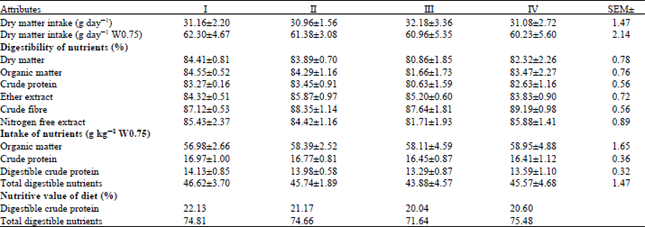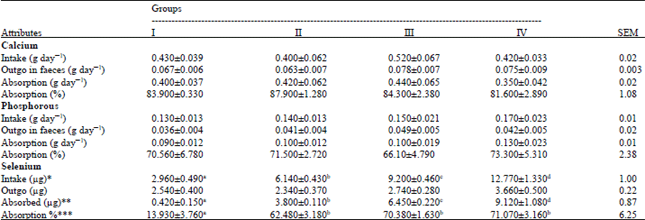Research Article
Influence of Sodium Selenite on Growth, Nutrient Utilization and Selenium Uptake in Cavia porcellus
Animal Nutrition, U.P. Pt. Deen Dayal Upadhayay Pashu Chikitsa Vigyan Vishvidyalaya Evum Go-Anusandhan Sansthan (DUVASU), Mathura, India
A.K. Garg
Department of Centre of Advanced Studies in Animal Nutrition, Indian Veterinary Research Institute, Izatnagar, India
Vishal Mudgal
Department of Animal Nutrition, Veterinary College, Jabalpur, Madhya Pradesh, India













